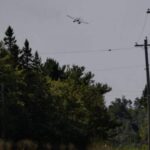As smoke from distant wildfires continues to blanket communities across Canada, health officials are issuing urgent guidance for residents to protect themselves during these increasingly common poor air quality events. With climate scientists predicting more frequent wildfire seasons, understanding how to safeguard your health has become an essential skill for Canadians.
“What we’re seeing is unprecedented in terms of the geographic spread of wildfire smoke across the country,” explains Dr. Amelia Richardson, environmental health specialist at the University of Toronto. “These aren’t just temporary inconveniences—extended exposure to fine particulate matter can have serious health consequences.”
The particulate matter in wildfire smoke, especially the microscopic PM2.5 particles, can penetrate deep into the lungs and even enter the bloodstream. This poses particular risks for vulnerable populations including children, seniors, pregnant women, and those with pre-existing respiratory or cardiovascular conditions.
Health authorities recommend several proactive measures during poor air quality events. Creating a clean air space within your home tops the list—keeping windows and doors closed, using portable air purifiers with HEPA filters, or creating DIY air filters by attaching a furnace filter to a box fan. If you lack air conditioning and face extreme heat, experts suggest finding public spaces with filtered air such as libraries, shopping centers, or community cooling centers.
“The most effective protection comes from limiting outdoor exposure when air quality is poor,” says Michael Chen, environmental health officer with the Ontario Public Health Association. “Check local air quality health index ratings before planning outdoor activities, and reschedule when ratings are high.”
For those who must venture outdoors during smoke events, properly fitted N95 or KN95 masks provide the best protection. Cloth masks and surgical masks offer minimal filtering of the finest particles that cause the most harm.
Health officials also stress the importance of staying hydrated and watching for symptoms of smoke exposure including eye irritation, throat irritation, coughing, headaches, and shortness of breath. More severe symptoms like chest pain, severe coughing, or difficulty breathing warrant immediate medical attention.
“We’re particularly concerned about cumulative exposure,” notes Dr. Richardson. “Even healthy individuals can experience respiratory effects after multiple days of breathing smoke-filled air.”
As wildfire seasons grow longer and more intense across North America, public health agencies are enhancing monitoring systems and alert protocols. Many communities now offer text message alerts for air quality warnings, allowing residents to take protective measures more quickly.
With climate models projecting increased wildfire activity in coming decades, how will Canadians adapt to make smoke preparedness a routine part of seasonal planning alongside other weather-related precautions?
























